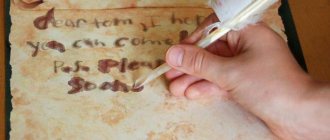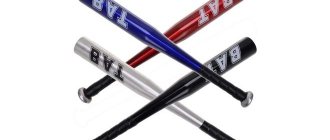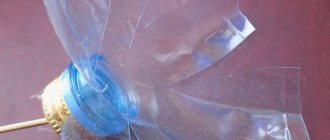Societies › Do It Yourself › Blog › Thrust control lock washer. With my own hands :)
Good health to everyone.
I apologize that I’m talking about cars again :)) I came across this kind of garbage... It was necessary to remove the rack, it turned out that the lock washer for the control rod was completely missing. Others are able to take it off and throw it away. Everything is arranged there simply.
The washer rests against the slots of the rack with 2 antennae. After tightening the nut on the rod, its edges are bent onto the nut to lock it so that the rod does not turn out along the way and the wheels do not move in different directions.
It looks like this on a Honda. In fact, almost the same as on all cars.
But the new one takes at least 2 weeks to move and costs $6 apiece)) and this is not funny. I realized that no one buys them and there is no demand for them) There is not a single replacement for the chord... only the original...
I walked around the central Kiev car market... all the traders (including VAZ, GAZ, IZH and ZAZ) just shrugged their shoulders))
I thought for a couple of days about how and what to make it from. Well, I don’t have time to wait 2 weeks for her. The shape is a grommet, the middle part of which can simply be ground off. But I couldn’t find any strong eyelets... I stopped using this technology. The original thickness is approximately 1.2-1.3 mm. In the garage I found a piece of soft Russian steel 1.15mm.
the size of the original is almost 1 in 1 one Ukrainian hryvnia)
we cut it with a grinder, you can do it right on a coin)
There is still a thick washer between the washer and the rack and we mark the workpiece on it.
Then we draw the honda logo, the letter H in the center.
We draw it with something sharp.
We sharpen a screwdriver or a small chisel and carefully cut out the letter H. First on one side, then on the other.
Place the washer and cut it)
Then we find in the garage some kind of heration with a diameter of 12 mm or whatever is needed for the diameter of the thrust, preferably a cone shape. And we break through.
In fact, the lock washer is ready))
My antennae are 6mm wide, it is better to “cut out” the antennae with an extra width of + 1 mm, later it is better to sharpen them with a ratfile/grinder. In the center hand made on the right honda original second hand)
Let's try it on the rail.
Everything can be put on a typewriter unsurpassedly.
I decided to create the next one more precisely.
You literally need to draw a circle with a compass and mark it with a ruler, then it works out perfectly and literally cut through it.
Maybe someone understands a method to create such a puck more elegantly? Please share. Production time for one puck is 20-30 minutes. The cost is virtually zero. Otherwise, 6$ and two weeks... the yakozunas scoff))
see also
Comments 38
It’s more elegant - you can drill holes at either end and in the corners of the letter “H”, before cutting, with a small drill. Is it not allowed to use thread locker there?
Is it not allowed to use thread locker there?
This is not a bad idea! Because The main problem is that the tendrils bend differently after cutting, because cutting identically is not possible. In case of drilling it must be identical))
The latch is unsafe, who understands how it will behave. After all, there are constantly shock-pulling overloads and not small ones.
It turned out fine. It is more elegant only on the press with a mandrel.
... and it’s better not to cut your hair...
These lock washers come complete with control rods, but the original Honda ones are enough for a couple of replacements, especially if the rack was removed, it is more convenient to bend the washer on the removed one than when it is on the car
They happen, but occasionally, sometimes even with unique ones...
Today, almost all brands of cars do not need this washer. Everything came from the “French”... Just tighten it with the required tightening torque, and that’s it...
A friend from the dromoforum once wrote from the news. The dude, after the service, (on a Honda), went somewhere. There was an accident along the way, apparently with fatalities, the car lost control at speed and flew into a ditch. With all the consequences. Later it turned out that at the service center the rod was tightened with a torque without installing the lock washer; on the way, the rod was unscrewed and the wheel turned against the direction of travel.
I had the option of the finger sticking out at the ball tip. Thank God at low speed. The feelings are still the same)))
A friend from the dromoforum once wrote from the news. The dude, after the service, (on a Honda), went somewhere. There was an accident along the way, apparently with fatalities, the car lost control at speed and flew into a ditch. With all the consequences. Later it turned out that at the service center the rod was tightened with a torque without installing the lock washer; on the way, the rod was unscrewed and the wheel turned against the direction of travel.
The wheel cannot turn against the movement when rotating. It tends to rotate along the axis of motion of the car. In addition, the process of self-unscrewing the control rod does not occur simultaneously. But, if the process has begun, then this inevitably affects the alignment of the wheels. That any driver will obviously see. The maneuverability of the car, extraneous knocks, etc. will change. In the end, the steering wheel spoke will deviate from the horizontal position at an angle noticeable to any driver. So, it looks like a fairy tale...
Source: www.drive2.ru
Homemade plastic washers. Simple, quickly simple.
If you need to make plastic washers of an unusual size, and you do not have a lathe, then the method I want to show may be useful. Its distinctive feature is that there is no need to make additional equipment.
]( “Plastic washers - easy and fast.”)
An old trick. But you can’t forget about it.. Iron washers can also be cut like this - just instead of a chisel - dracheva ratfil..
People are suffering. I just cut it out when necessary. =)))
rumb; wisely, you can’t make a hole literally in the middle of the washer with the second cut.
Or you can take a crown with a centering drill. And you will be happy.
4eh wrote: you can’t make a hole literally in the middle of the washer with a second cut.
There are various notches, I had a double one lying around somewhere, it immediately cuts a hole in the center, and for the washer, IMHO, a deviation from the center of 0.5-1 mm is not critical, it’s not a gasket. With perforation, naturally, it is limited in size, but using the above (well-known) method you can create any size.
Victorych wrote: and using the above (well-known) method
What could be written in the 5th line of text stretched out for 12.. minutes. I liked the hurry-up acceleration of playback. just like Charlie Chaplin
Victorych wrote: With a perforation, naturally, limited in size,
The largest notch I have is 60mm, which immediately makes the washer for release. I’ve been doing this for a long time, in the 90s there were no gaskets for sinks, and there was a lot of sheet rubber. All the cuts I made were for a drill or drilling machine - this way the edges are neater, without bevels. For vehicle washers, the cutter that comes with parking sensors would be suitable.
The bachelor wrote: My biggest hole is at 60mm
I didn’t mean the largest dimensions, a notch can be made from 1420 mm pipes, but about the fact that for any size you need to have your own notch (although how many of these sizes are really needed?) But the method described a little higher is not suitable for soft materials like rubber, cardboard, paronite, etc.
Viktorich wrote: a notch can be made from 1420 mm pipes
Viktorich wrote: and about the fact that you need to have your own cutout for any size (although how many of these sizes are really needed?
For faucet axle boxes: Czech, Russian, 1/2″. For hoses” 22.1/2″, for faucet 3/4, for Soviet herringbone (external) - 2 crescents are made with an additional notch. For release from the sink, and rings for siphon. Here is my entire arsenal. I haven’t used half of it for a long time, even more
Viktorich wrote: But the method described a little higher is not suitable for soft materials such as rubber, cardboard, paronite, etc.
When I need to create extraordinary pieces of rubber, I use a drill and sandpaper.
The bachelor wrote: For faucet axle boxes: Czech, Russian, 1/2″. For hoses” 22.1/2″, for faucet 3/4, for Russian herringbone (external) - 2 crescents are made with additional notching. For release from the sink Well, and rings for the siphon. Here is my entire arsenal. I haven’t used half of it for a long time, even more
so plumbing gaskets are a dime a dozen at the moment, no need to bother
Mikael wrote: so plumbing gaskets are a dime a dozen at the moment, no need to bother
The bachelor wrote: I’ve been doing this for a long time, in the 90s you couldn’t get gaskets
Bachelor; and I think I wrote it at the moment
To watch online, click on the video ⤵
How to Make a Foosball Table from an Empty Box #4 Read More
How to make a tabletop HOCKEY FROM CARDBOARD Read more
How to make table football from cardboard Read more
Table football - how to make it yourself Read more
How to make bandy with magnets Board game from cardboard Read more
How to make tabletop air hockey with your own hands Read more
How to make table football for free quickly with your own hands Read more
Table football from a cardboard box Learn more
How to Make a Board Game “Boxing” from Cardboard with Your Own Hands More details
How to make a football out of cardboard with your own hands Read more
How to make bandy with magnets Board game from cardboard Read more
Candy machine in 5 minutes / From a plastic bottle and cup / Budget DIY











